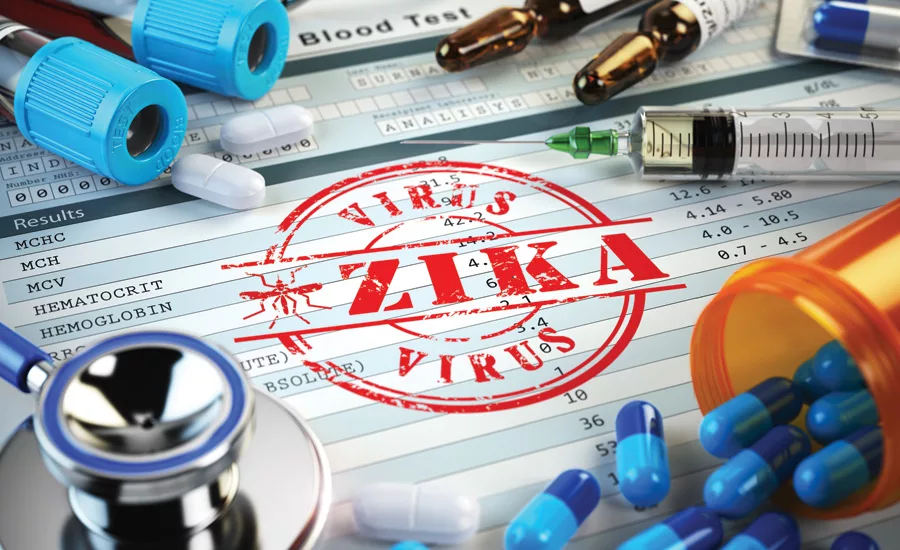Addressing the Continued Risk of Zika: Protection, Prevention and Communcation

With Zika now a “foreseeable” risk under Duty of Care, organizations are realizing their potential liability and are proactively mitigating their employees’ exposure to the threat by educating and protecting their employees traveling to – or living in – Zika endemic regions.
Although the Zika virus is not necessarily new (first recorded case in 1952), it has been prevalent in headlines coming out of Brazil since early 2015. The U.S. Centers for Disease Control and Prevention notes that cases of the Zika virus have been reported in 48 countries, including the United States. As of the middle of September, there are reportedly 10,295 cases of Zika throughout the U.S. and its territories. So far, 14 of these cases were locally acquired mosquito-borne cases, as most are caused by travelers going to Zika-endemic areas and contracting the virus while abroad. Officials fear this number could be much higher, since symptoms of the Zika virus are absent in more than 80-percent of the infected, and many people do not realize they acquired the disease. In the timespan of a couple short months, the total cases of Zika in the U.S. has increased exponentially as summer (and mosquito breeding) set in.
It is clear that the virus is primarily transmitted by mosquitos (Aedes Aegypti), via sexual contact with an infected partner, in utero, and also through blood transfusions.
There is currently no vaccine to prevent the Zika virus, but continuous education and prevention measures are key to keeping travelers safe. While scientists are hard at work developing a vaccine, organizations should be educating employees to help mitigate their risks while traveling to Zika-endemic areas.
Rio Wrap-Up
While the impact of Zika was well publicized and pre-determined months before the Olympic Games in Rio this summer, the games saw slight impact due to the disease, as well as other factors in Rio. There was a small minority of overall participating athletes from various countries (of child-bearing ages), who chose not to participate because of the Zika threat. Overall event attendance was down, with significant open tickets for many events due to the lower tourist population the events usually draw.
During the Olympic Games, there was little activity related to Zika and there were no new developments discovered during the time of the games. As of August 26, the World Health Organization stated that no one appears to have caught Zika at the Olympics. This is due to the fact that August is winter in Rio de Janeiro and the Aedes Aegypti mosquito is less active, but also attributed to Brazil practicing good mitigation procedures with significant efforts put forth by the Brazilian Health Authorities and the Brazilian Army to eradicate mosquito breeding sites in the area. While the stats show no cases caused by the Summer Olympics now, there is still a possibility that people who did contract the disease do not know it, as most people are asymptomatic. The WHO is advising that anyone who has recently traveled to Rio (or any other Zika endemic region) should be cognizant they don’t get bitten by mosquitos at home, as well as use protection to avoid sexual transmission.
Is the U.S. Ready?
As summer arrived in the U.S., there was an expectation of increased Zika cases from both the Aedes Aegypti mosquito and sexual transmission. The CDC reports that this type of mosquito is found mostly in the Southwest and Southern United States, where there are targeted mosquito control efforts in six high-risk states: California, Texas, Hawaii, Arizona, Louisiana, and most recently covered in the news, Florida (specifically Miami-Dade County).
The U.S. is not expecting the epidemic to hit quite as hard as it has in South America, but federal officials are warning that even small numbers of cases could have especially detrimental effects, particularly in regards to the relationship between infection while in utero and microcephaly. There is now a similar cause and effect between Zika infection and certain neurologic conditions (i.e., Guillain-Barre syndrome).
The CDC issued a Level Two travel alert in February 2016, which advises travelers to “practice enhanced precautions,” as well as a recent advisory to pregnant women and their partners to consider avoiding nonessential travel to Miami-Dade County if they are concerned about the virus. It is important to keep in mind that the less travel to higher-affected areas will help reduce the instances of the virus being brought back or spread in the U.S.. As globalization and ease of travel from the U.S. allows organizations to conduct business across borders, the spread of Zika cases will be inevitable.
With the recent influx of Zika cases in Miami, Florida, specifically the Wynwood and Miami Beach areas, these cases are a reflection of how the disease is spread not just by the Aedes Aegypti mosquito, but also through the human as a vector, specifically from sexual contact (both male-female and female-male). Authorities in Florida are executing the CDC’s Zika Action Plan, which is the roadmap to mitigate the spread of the disease, and going directly after the breeding grounds. Texas, Alabama and surrounding states are anticipating similar case increases and are adopting the ZAP as well. Being that the U.S. has good resources (air conditioning, sealed windows, etc.), there isn’t anticipation of epidemic proportions, but there is preparation and expectation for an increase in specific parts of the country, specifically in the Southern United States. As an effect of these regional increases, the CDC has recently recommended pregnant women in the U.S. get a baseline screening Zika test, as most of those affected with the disease are non-symptomatic. In addition to pregnant women getting tested, the New York Post reported on August 27, that the Federal Government has also told U.S. blood banks to start screening for Zika. This is an expansion as formerly the testing was limited to Florida and Puerto Rico.
With Zika prevalent now in the U.S., this brings to light the cause-and-effect case of the disease, which has put employers in the spotlight with Duty of Care laws when deploying their mobile workforce to these Zika affected regions.
Education and Communication
While education is key, organizations need to consider policies and procedures for those traveling to Zika endemic areas, specifically those who are looking to start a family in the near future. An organization’s Duty of Care should reflect the understanding of the potential impacts of the Zika virus, and liabilities faced with at-risk employees (male as well as female).
Since the Zika virus has emerged over the past year as a new risk, many U.S. organizations do not have existing policies or prevention measures in place and are left scrambling to communicate to their travelers. The federal government has been attempting to provide answers to help organizations craft these communications. Recently, the CDC released a Zika Action Plan (ZAP) outlining what to do when a U.S. case of Zika arises.
As part of their Duty of Care, companies should be crafting Zika educational seminars or collateral, advising preventive measures, including:
-
what is the proper insect repellent
-
when are the higher-risk times of day
-
what clothing is necessary
Warning signs of possible infections are also important to communicate, including:
-
skin rash
-
fever
-
joint & muscle pain
-
conjunctivitis (eye redness)
-
headache
Organizations should craft a Zika communications plan. The materials should outline preventive measures and warning signs, medical and treatment information, and include information about the incubation period and immediate actions to seek the proper medical care in the area. Materials should be available in a variety of formats – both print and online – to ensure the information is shared as widely as possible throughout the organization. This communication plan, ideally spear-headed by HR, should give employees the option of relocating and/or declining assignments in Zika endemic areas without career repercussions.
For this year’s Olympics in Brazil, the CDC put together specific precautions for those who were traveling to the Games:
Pregnant Women:
-
Do not go to the Summer Games.
-
If you must go, talk to your doctor.
-
Strictly follow steps to prevent mosquito bites.
-
Avoid unprotected intimacy during your trip (use protection for 8 weeks).
-
If your male partner goes to the Olympics (or Zika endemic region), use a condom or avoid intimacy for 6 months after travel to Zika endemic region.
Everyone else:
-
Schedule an appointment (with your MD) 4-6 weeks before departure.
-
Ensure you are up to date with vaccines/medicines for Brazil.
-
Pack a travel health kit and review options should you need medical care in Brazil.
-
Monitor travel warnings and alerts.
-
Follow security and safety guidelines.
In addition to personal travel preparation, the Brazilian government has had teams of health agents carrying out continuous inspections to eliminate potential breeding sites. This practice should also be performed by employers as part of their Duty of Care. Brazilian officials say the infestation rate is now less than one percent. The spread of Zika is also less likely as the Summer Games are taking place during the winter months (due to a drop in the mosquito burden). Rio City Hall also created tourist health guides and apps to help visitors find the nearest health center in case they feel sick during the Games.
How to Best Protect Your Organization
Today’s organizations typically have a large mobile workforce. Employees who travel across borders often find themselves in unfamiliar environments and situations, subject to increased risks and threats (like Zika), and less prepared to handle these situations than if they were in their home country. As a result, employers carry an increased “Duty of Care” obligation to protect their employees from these unfamiliar – yet often “foreseeable” – risks and threats. If a pregnant/soon to be pregnant employee (or partner) contracts the Zika virus while on assignment, the organization could be liable.
In addition to an employer’s responsibility, there is a growing expectation of “Duty of Loyalty,” whereby ‘‘the duty of an employee is not to compete with the interest of the organization and to follow the employer’s Duty of Care policies and procedures.” In a Duty of Loyalty culture, employees willingly cooperate with travel risk management guidelines – even if these policies curtail employee “privacy” in terms of the employer’s knowledge of their whereabouts.
It is important for organizations to recognize the risks for employees/expatriates in Zika endemic regions and offer them alternatives should they not feel comfortable living or travelling in the region. Most Zika endemic areas are also at risk for other dangerous mosquito-borne diseases like Malaria, Dengue and Chikungunya viruses, so the communications and risk mitigation planning should be all-encompassing. Having this plan in place is not only the right thing to do, but will help employee morale and shows employees that there is a higher level of care for their well-being.
While the Zika virus is new for many organizations, there are enough prevention and precaution materials available from the CDC and federal organizations to put together a communications and reactionary plan for employees traveling or working abroad.
Looking for a reprint of this article?
From high-res PDFs to custom plaques, order your copy today!






